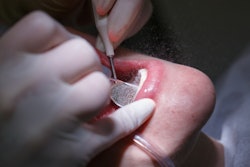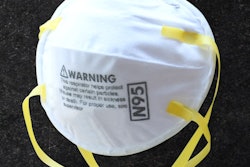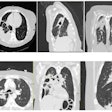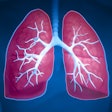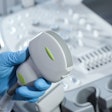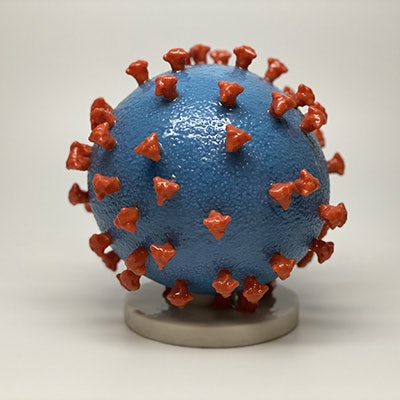
When a COVID-19-positive individual with a high viral load breathes or coughs, it may result in room concentrations ranging from thousands to millions of viral copies per cubic meter, according to a study published on July 27 in JAMA Network Open.
Ventilation and the microdroplet formation process affected the number of droplets released from simulated individuals. The results suggest that people such as dentists and hygienists who work on patients in close quarters may be at risk of infection if they spend more than a few minutes in a small room with a COVID-19-positive person with a high viral load.
"Sharing a workplace in a small room with a person with asymptomatic COVID-19 is not advised," wrote study authors Michael Riediker, PhD, and Dai-Hua Tsai, PhD, from the Swiss Centre for Occupational and Environmental Health in Winterthur, Switzerland.
In the air
When humans cough, they release thousands of microdroplets per cubic centimeter in the size range of 0.6 µm to 15 µm, and the droplet concentration increases with cough flow rate, the authors explained.
Meanwhile, regular breathing also leads to some microdroplet production that is attributed to fluid film rupture in the respiratory bronchioles during inhalation. This leads to droplets forming and being released during exhalation. Additionally, a significant proportion of particles are likely to remain airborne for many hours in turbulent conditions during coughing and breathing. Because individuals with asymptomatic or mild COVID-19 have been reported to frequently transmit the virus, the researchers sought to assess the numbers of droplets spread from COVID-19 patients while these patients are in small, poorly ventilated rooms.
Riediker and Tsai used aggregate data from previous clinical trials to calculate the viral load per exhaled microdroplets formed during normal breathing and while coughing. The resulting size distribution provided an initial estimate of the concentration of virus copies released during regular breathing or coughing from a simulated individual. This viral emission factor was then fed into a mathematical model to simulate the situation in a closed room with different ventilation air exchange rates. The room size chosen was similar to that of an office with two or three people or an exam room, according to the researchers.
High risk
In a room with someone coughing frequently, estimated concentrations were high, with a maximum of 7.44 million copies/m3 from an individual considered to be a high emitter. Regular breathing from a high emitter was modeled to result in lower room concentrations of up to 1,248 copies/m3, the researchers found.
Therefore, people with very high viral loads pose an infection risk in poorly ventilated closed environments. This suggests that strict respiratory protection may be needed when there is a chance that individuals will be in a small room together, specifically for prolonged periods of time, according to Riediker and Tsai.
The study has many limitations, including the fact that the estimated virus levels rely on the number of virus copies produced by a COVID-19-positive individual. The researchers used sputum and swab data from a few well-described peer-reviewed studies, assuming they provided reasonable approximations for the virus load in the respiratory bronchioles, they noted.
Remain cautious
Nevertheless, workplaces should not be shared if there are no rapid tests to differentiate between individuals without COVID-19 and those who are infected but asymptomatic. Healthcare professionals should wear the best possible respiratory protection, including eye protection, when they are in rooms with others, especially those who are coughing. All patients, including those who are asymptomatic, should wear a well-fitting surgical mask to reduce aerosols, the authors wrote.
"Our mathematical modeling suggests that the viral load in the air can reach critical concentrations in small and poorly ventilated rooms, especially when the individual is a superspreader, defined as a person emitting a large number of microdroplets containing a high viral load," they wrote.





